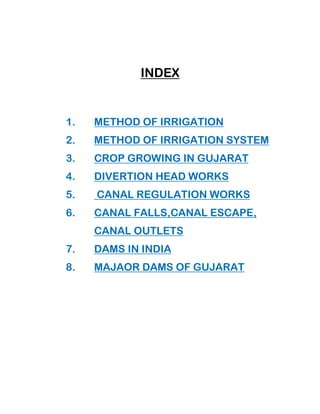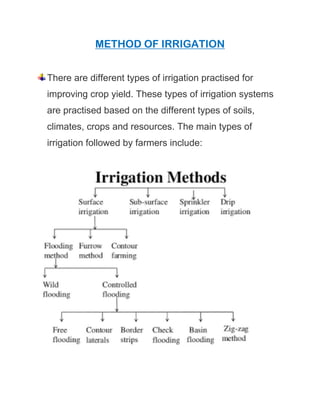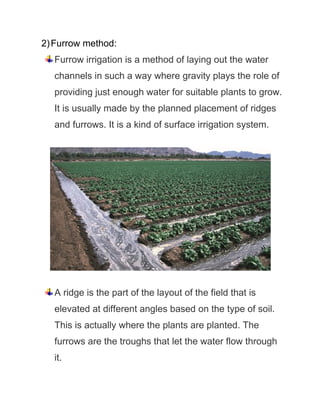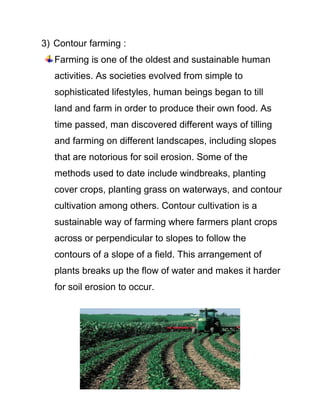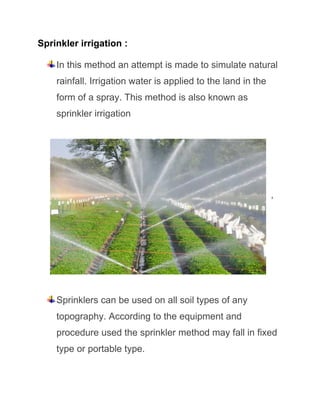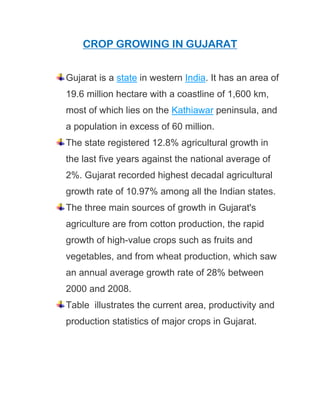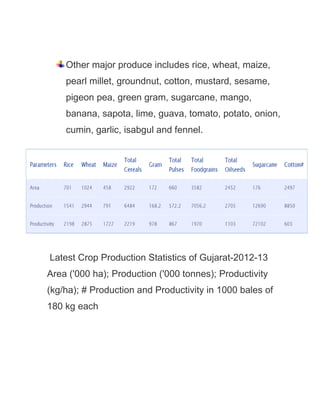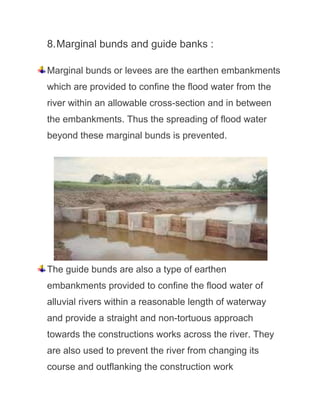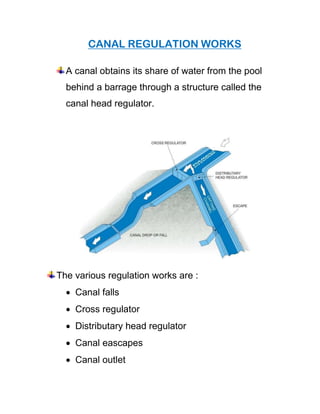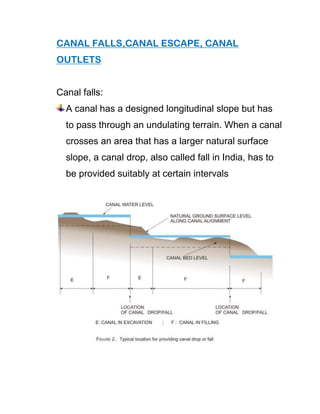The document outlines various irrigation methods used to enhance agricultural productivity in Gujarat, highlighting techniques such as surface, subsurface, sprinkler, and drip irrigation, each with its advantages and disadvantages. It also discusses the components of irrigation systems, including diversion headworks, canal regulation works, and the significance of major dams in India and Gujarat for water management and agricultural growth. Additionally, the document presents statistics on crop production in Gujarat, mentioning the state's remarkable agricultural growth rate and major crops being cultivated.
